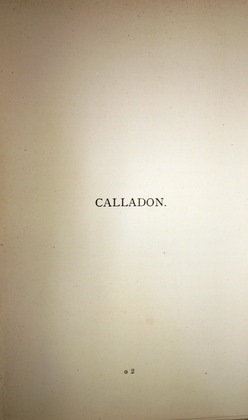Christianity and Moral Didacticism
Hawthorne’s ‘Calladon’ appears to be an outright allegory for original sin, in which the titular protagonist moves from an innocent state of bliss, through temptation into sin, represented by the three rooms of Abra, Cada and Bra, respectively. The central motif of the tale is the great lamp which lights the inner sanctum of Abra; the lamp burns permanently, and illuminates not only the room, but Calladon’s mind and heart: ‘the more it shone upon him the better he understood his studies […] it warmed Calladon’s heart likewise, and made him loving and generous’ (pp.199-200). The lamp and the light it casts represent God’s love, in which the hero flourishes, and the deific figure of Calladon’s mysterious Master ensures him that it is eternal: ‘”It was here before Abracadabra and the world existed […] and it will burn for ever”’ (p.202).
The beatific, omnipotent Master is a personification of the Christian God, and once Calladon has come of age he invests in him free will and leaves him to conduct himself as he sees fit, to ‘think your own thoughts, and do your own deeds’ (p.204). He advises him only to maintain his faith in the lamp, and not to venture outside its light. He also grants Calladon a companion, Callia, who depending on his treatment of her will be his ruin or salvation; predictably for Victorian fairy tale literature it is the female Callia who, like Eve, succumbs to temptation and leads the boy out of the Eden of Abra. Upon opening the door and admitting her desire to ‘know more than we could know by staying here’ (p.217), Callia and Calladon are forced from Abra by the bright light of an ‘angel’s sword’ (p.218). Upon gaining knowledge, they are expelled from their Edenic sanctuary of innocence.
As they travel through the two outer rooms the children succumb to the further temptation of wealth in the form of jewels and gold ‘dull and tarnished’ (p.221), until they are eventually mired in the ‘serpent-mud’ of Bra’ (p.228) which threatens to overwhelm them. Mired in the physical embodiment of their sin and loss of innocence, they realise the error of their ways and are visited once more by the Master, now wrathful God rather than benevolent, who dispenses the moral of the tale: ‘I am he who built Abracadabra […] I built it clean and wholesome, and you have made it a place of mud and serpents, and all unclean things. This dirt in which you wallowed is the evil that has come out of your own minds and hearts’ (p.229). The children are forced to repent their sins by physically cleaning away the filth of the outer rooms, thus purging themselves of sin. Ultimately Calladon is returned to the inner chamber and the great lamp, having learnt that ‘the light of Abra was the only true light, and their strength was not their own’ (p.234). The religious allusions are barely concealed by the narrative- only by accepting that God’s love and will is the righteous path and rejecting unholy knowledge does the protagonist achieve salvation, as in the Christian faith.






















